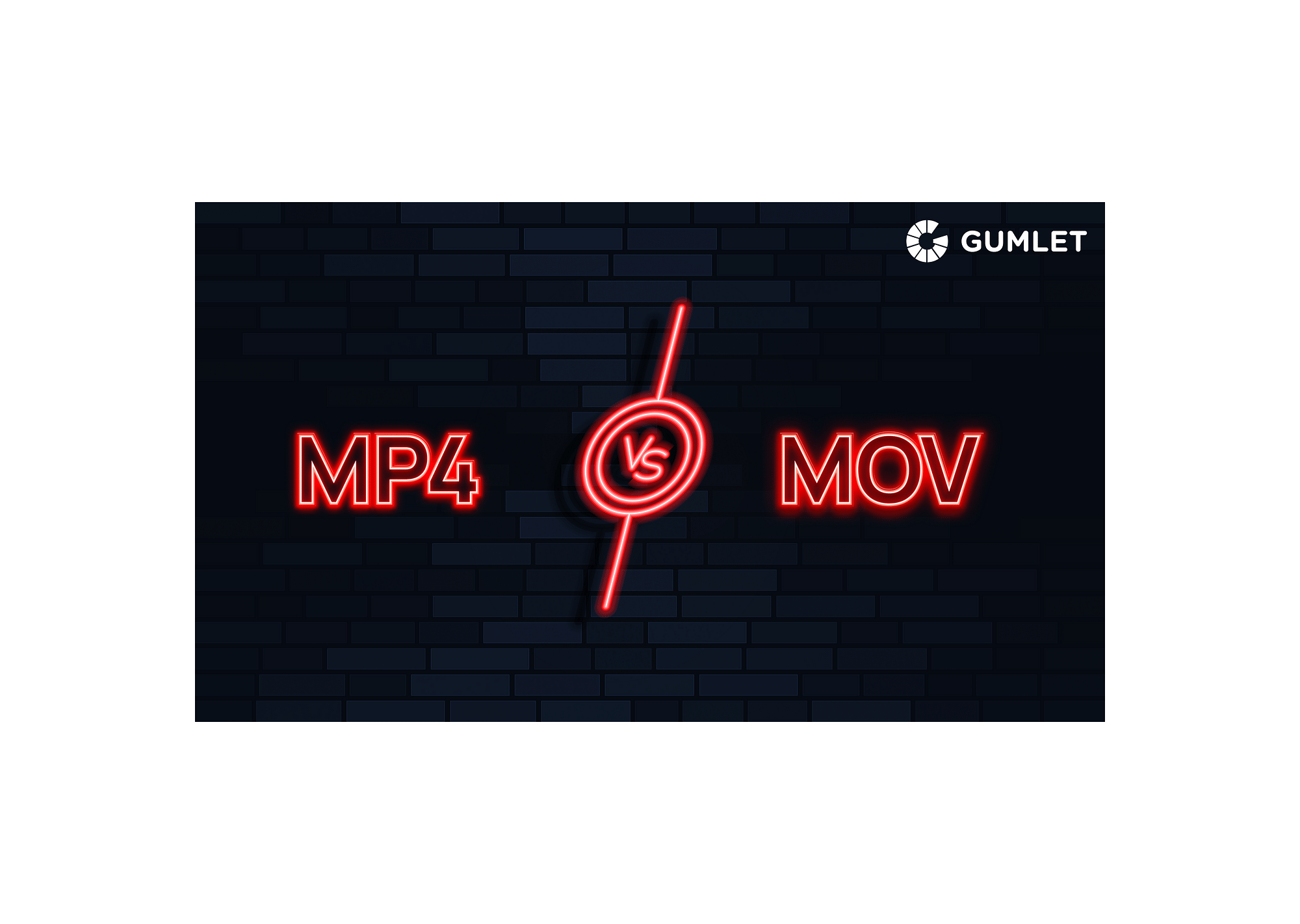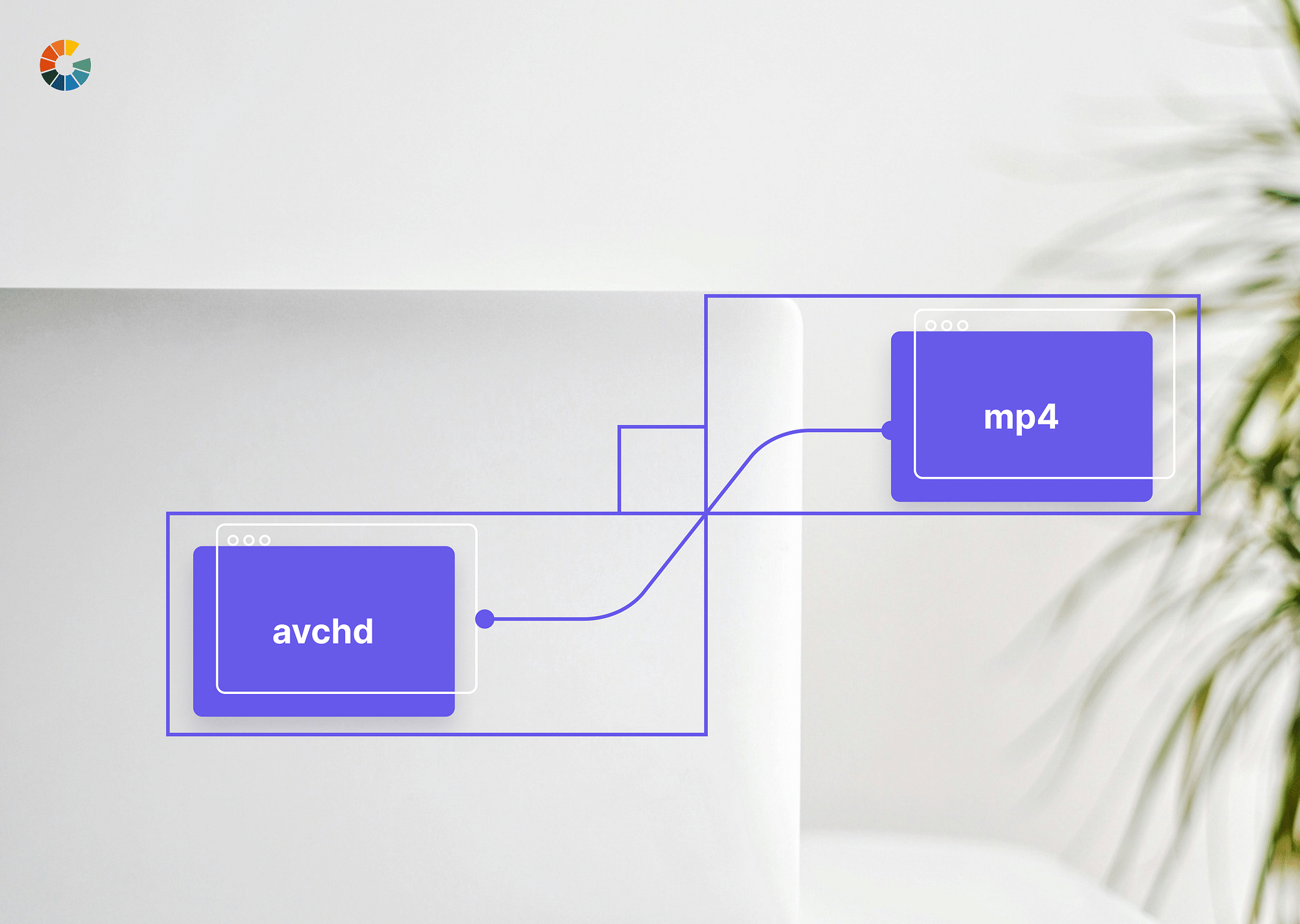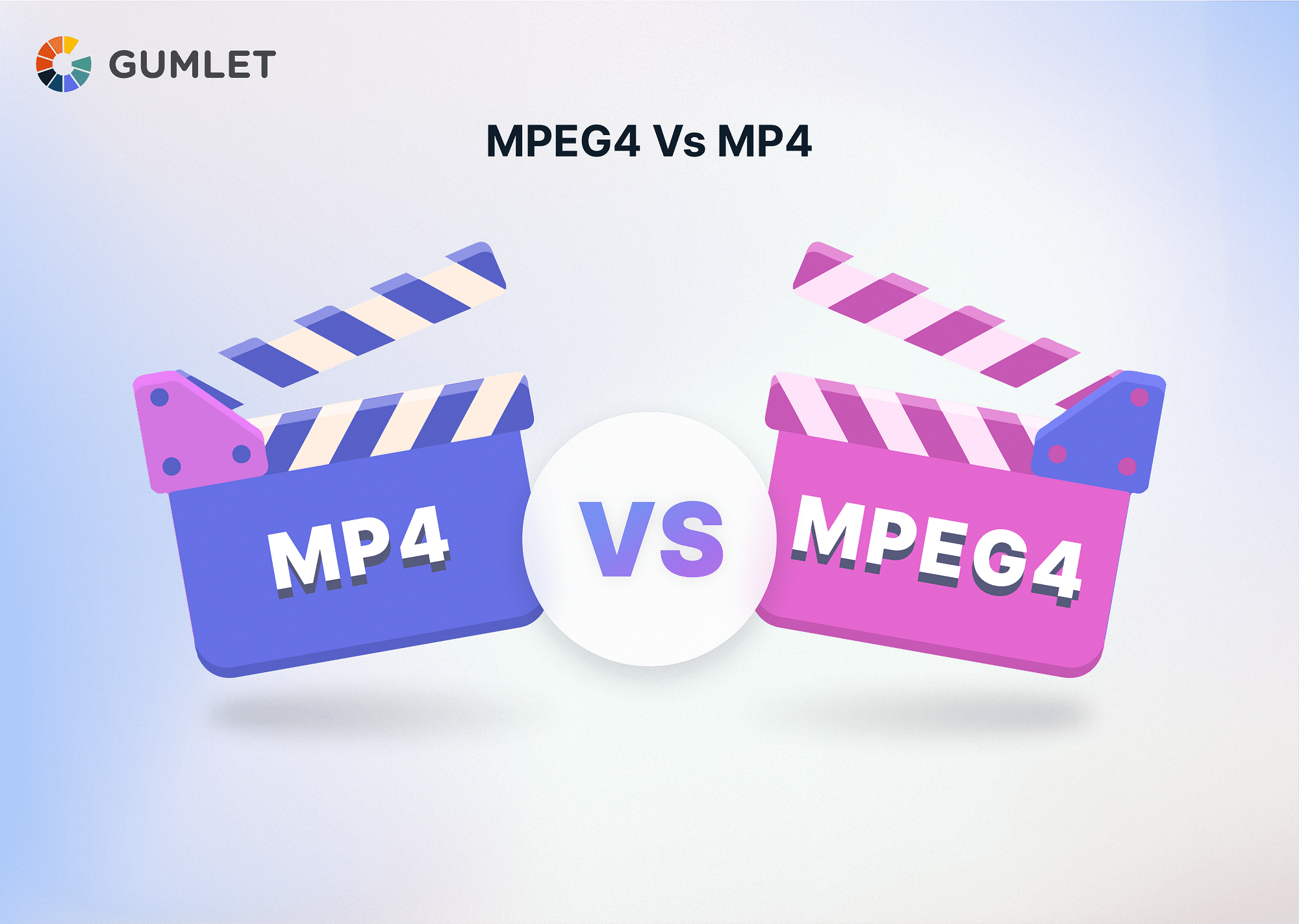When it comes to video formats, there are a lot of options to choose from. Two of the most popular formats are MP4 and MOV. Both formats have their own advantages and disadvantages, but what are the key differences between them? In this article, we will look closer at MP4 and MOV and compare the two formats regarding file size, video quality, platform compatibility, and codec support. We will also discuss which format is better for video streaming and how to convert between the two formats.
Schedule a Demo with Our Video Expert!
Discover how Gumlet can help you build a cutting-edge video streaming infrastructure.
What is MOV?
MOV is a file format that Apple developed for use in QuickTime. It is a container format that can hold multiple video and audio tracks, as well as subtitles, captions, and other metadata. MOV files are known for their high-quality video and audio, and they are often used in professional video editing and post-production.
How to open a MOV file?
MOV files can be opened using QuickTime Player, a free media player that comes pre-installed on Macs. Windows users can also download QuickTime Player for free from the Apple website. Other media players that can open MOV files include VLC, Windows Media Player, and iTunes.
Pros of MOV
- High-quality video and audio
- Supports a wide range of codecs
- Suitable for professional video editing and post-production
Cons of MOV
- Larger file size
- Less compatibility with different platforms and devices
What is MP4?
MP4 is a file format that is similar to MOV in that it is also a container format. It is based on the MPEG-4 standard and can hold multiple video and audio tracks, as well as subtitles and other metadata. MP4 files are known for their small file size and high compatibility and are often used for video streaming and online video sharing.
Differences Between MP4 and MOV
When comparing MP4 and MOV, there are a few key differences to remember. The main differences are:
| Feature | MP4 | MOV |
|---|---|---|
| File Size | Smaller | Larger |
| Video Quality | Good | Excellent |
| Platform Compatibility | High | Low |
| Video/Audio codec support | Good | Excellent |
| Extension | .mov | .mp4 |
| Developer | International Organization for Standardization | Apple |
| Suitable for online video sharing and streaming | Yes | No |
| Compression Ratio | High | Low |
| Widely supported | Yes | No |
| Suitable for professional video editing | No | Yes |

File Size
MP4 files are generally smaller in size than MOV files. This is because MP4 files use a more efficient compression method than MOV files. This makes MP4 files more suitable for online video sharing and streaming, as they require less bandwidth.
Video Quality
MOV files are known for their high-quality video and audio. This is because MOV files use a more advanced compression method than MP4 files, which allows for higher-quality video and audio. However, MP4 files still have good video quality, and the difference may be insignificant in most cases.
Platform Compatibility
MP4 files are more widely compatible than MOV files. This is because MP4 files are based on the MPEG-4 standard, which most media players, devices, and platforms support. On the other hand, MOV files are primarily associated with Apple products, so they may be less compatible with other platforms.
Video and Audio codec support
MOV files support more audio and video codecs than MP4 files. This is because MOV files are based on the QuickTime standard, allowing a greater variety of codecs to be used. However, MP4 files still support a wide range of codecs, and the difference may be insignificant in most cases.
Here is a quick summarization of all the differences between MP4 and MOV discussed above:
- MP4 files are smaller in size than MOV files, which makes them more suitable for online video sharing and streaming.
- MOV files have higher-quality video and audio than MP4 files
- MP4 files are more widely compatible with different platforms and devices, while MOV files are primarily associated with Apple products.
- MOV files support a wider range of video and audio codecs than MP4 files, which can provide more flexibility in terms of video and audio quality.
Which is Better for Video Streaming: MP4 or MOV?
When it comes to video streaming, MP4 is the better option. This is because MP4 files are smaller in size, and they are more compatible with different platforms and devices. Most video streaming services, such as YouTube and Vimeo, also support MP4. However, if you are looking for the highest quality video and audio, then MOV may be the better option.
When Should I Use MOV or MP4?
If you've followed the article, you must have understood the core differences between the two majorly used file formats. However, one major question remains: When should one use one file format over the other? Here is a short, actionable answer to the question to help you decide between the two formats whenever you are stuck:
- Suppose you are working on professional video editing and post-production. In that case, MOV is the better option due to its high-quality video and audio and support for a wide range of codecs.
- If you want to share or stream videos online, MP4 is the better option due to its smaller file size and high compatibility with different platforms and devices.
How to convert MP4 to MOV or vice versa?
Several free tools are available for converting MP4 to MOV and vice versa. Some popular options include the following: (note that we illustrate how to convert from MP4 to MOV in these steps. To do the conversion the other way around, you need to follow the same steps, just upload relevant files and ensure that the output format is the one that you require your file to be in):
1. Handbrake: A free, open-source video transcoder that allows you to convert between various video formats, including MP4 and MOV.
Step-by-step conversion method:
- Download and install Handbrake
- Open Handbrake and click on "Open Source" to select your MP4 file
- Choose "MP4" or "MOV" as your output format in the "Container" tab
- Click on "Start" to begin the conversion process
- Once the conversion is complete, your new MOV file will be saved in the location you specified in the "Destination" tab
2. CloudConvert: An online file conversion service that allows you to convert between various file formats, including MP4 and MOV.
Step-by-step conversion method:
- Go to the CloudConvert website
- Click on "Select Files" to select your MP4 file
- Choose "MOV" as your output format
- Click on "Start Conversion" to begin the conversion process
- Once the conversion is complete, you can download your new MOV file
3. VLC Media Player: A free and open-source media player that also allows you to convert between various video formats, including MP4 and MOV.
Step-by-step conversion method:
- Download and install VLC Media Player
- Open VLC and go to Media > Convert/Save
- Click on "Add" to select your MP4 file
- Choose "MOV" as your output format in the "Profile" option
- Click on "Start" to begin the conversion process
- Once the conversion is complete, your new MOV file will be saved in the location you specified
4. Freemake Video Converter: A free video converter that supports converting MP4 and MOV, as well as other video formats
Step-by-step conversion method:
- Download and install Freemake Video Converter
- Open the program and click on "Add URL" or "Add files" to select your MP4 file
- Select "to MOV" from the list of available formats
- Click on "Convert" to begin the conversion process
- Once the conversion is complete, your new MOV file will be saved in the location you specified
These are just a few examples of the available tools, and depending on your preferences, you may find other tools that work better for you.
Conclusion
In summary, MP4 and MOV are both popular video formats that have their own set of advantages and disadvantages. MP4 is suitable for online video sharing and streaming due to its smaller file size and high compatibility. At the same time, MOV is suitable for professional video editing and post-production due to its high-quality video and audio and support for a wide range of codecs. Ultimately, choosing between the two formats will depend on your specific needs and requirements.
FAQs
1. Is MOV or MP4 better for YouTube?
MP4 is better for YouTube as the platform widely supports it and is smaller in size.
2. Does converting an MP4 file to MOV lose quality?
Converting MP4 to MOV should not result in any significant loss of quality as long as the conversion is done using a reliable method.
3. Is the MOV file lossless?
MOV files can be lossless or lossy, depending on the codec used to compress the video and audio.
4. Is MOV the best quality?
MOV files are known for their high-quality video and audio, making them suitable for professional video editing and post-production.
5. Should I convert MOV to MP4?
If you want to share or stream videos online, then converting MOV to MP4 may be a good idea as it will result in a smaller file size and better compatibility with different platforms and devices.




